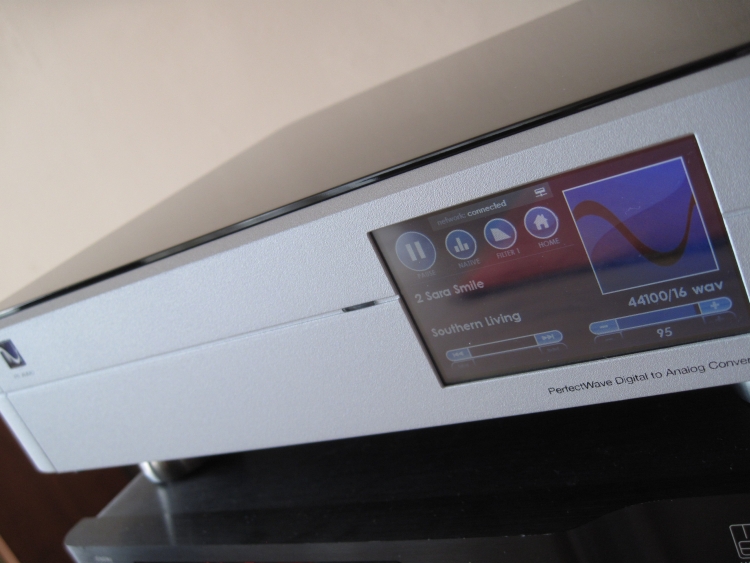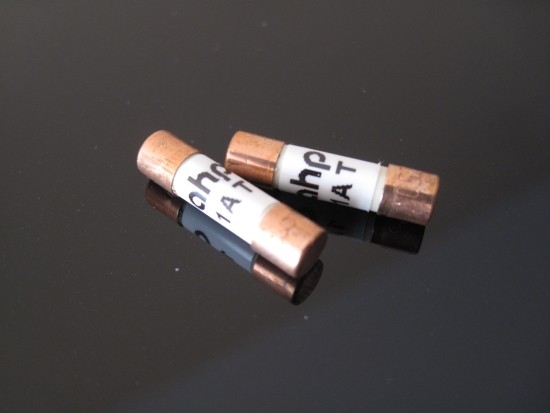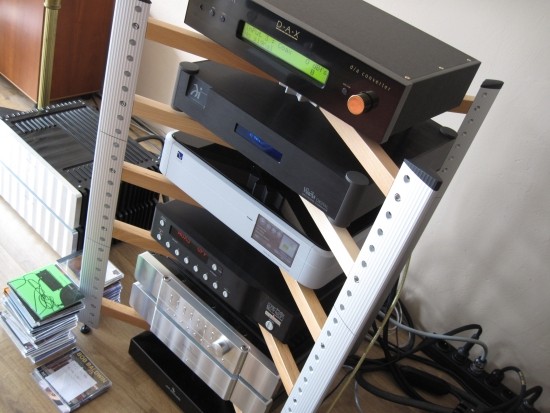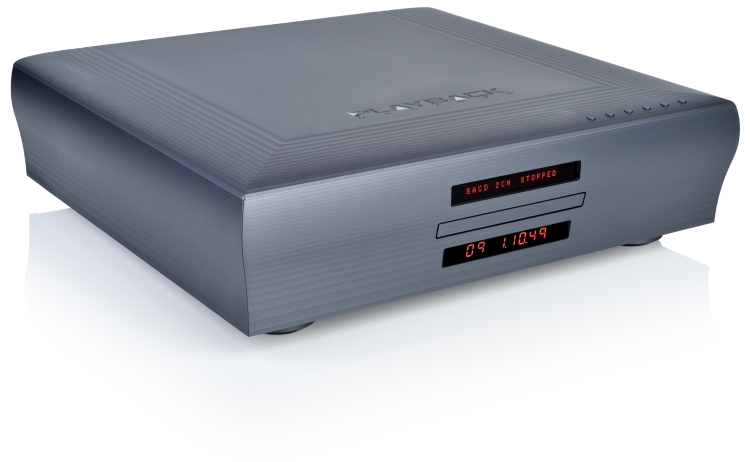PS Audio PWD (Perfect Wave DAC) – part 3

The PWD initiated quite a chain reaction
Network cables, switches, power cables, and NAS placement were all examined and found to have an influence on the sound. Here is the final installment of the PWD review.
Compared to the Audio Synthesis DAX Decade
In the meantime, I had received an Audio Synthesis DAX Decade DAC for review. It is an older model that was completely revised by the factory a short while ago. The DAX is incredibly natural sounding, with a smooth, relaxed signature not unlike the Levinson no.360S DAC but more relaxed still. The DAX combined what I recall the Audiomeca Enkianthus X DAC to sound like with the richly textured and luxurious sound of the 360S. In a word: it combined transparency and openness with fluidity and relaxation. Very seductive indeed. What’s more, the DAX also had the super-airy and open treble that the 360S has. And that made me doubt the PWD again. I did like its solid 3D sound but did’t like its restricted treble response. It seemed like it was open until a certain frequency and was hard cut off above that, no matter what filter type was selected. Even the Wadia 27ix DAC managed to sound a little airier, even though all Wadias are somewhat on the dark side due to their DigiMaster filtering. So, I was ready to write my final conclusion until…
Changing the PWD’s fuses
Before I even opened up the PWD, I had ordered new fuses. 2x 1A, one for digital and one for analog. I chose Hifi Tuning for its smoothness-inducing quality and the pure silver versions for what I hoped to establish a more open treble. The fuses are covered by a plastic cover and upon lifting it I was in a for a big surprise. Inside were AHP fuses! Apparently, the previous owner had already replaced the original fuses with AHP ones. Regular readers of this site probably already know that I find AHP fuses to sound incredibly dynamic yet definitely shut-in in the treble. For unknown reasons, they just lack air and extension. And indeed: upon swapping them for the HT fuses: GONE was the treble ceiling. In its place nice sweet treble with good extension. It still wasn’t the equal of my Levinsons or the DAX, but it now at least matched the Wadia’s treble response and even improved on it a bit.
Final placement
The PWD was happiest on the top level of the Spider rack. Also, because it is already very dynamic and can tip over into a little dryness, I found it to sound better when placed on the rubber interfaces than on Ceraballs. It also sounded good on its own feet when placed on top of another component.

Above: the culprit! These are the main reason for me finding the PWD to sound too dry and too dark. – Don’t use AHP fuses if you want to maintain treble airiness in general and definitely don’t use them in a PS Audio PWD. Just use the standard fuses instead or go with Hifi Tuning.
FINAL CONCLUSION
The PWD demonstrates very clearly why it is important to maintain the musicdata/clock integrity. Just like when comparing integrated cd players to separate transports and dacs (all things being equal) the integrated players will win in terms of pace, focus, soundstage and dynamics, likewise it is with the PWD. Compared to all other computer audio playback solutions I have heard, the PWD managed to sound most dynamic, most lively, most 3D and it also has the most solid bass, and best PRAT. Also, it never sounds anything but entirely real, there is no artifice of synthetic signature here. The only area in which it performs less well than 10.000 euro reference dacs is in the treble and the way it instills a luxurious quality into the sound. The PWD’s digital part functions so well that I wouldn’t easily go back to a separate computer – usb interface – da converter solution. Compared to the PWD, such solutions sound slightly synthetic and uninvolving. That said, using a USB interface permits for using a reference DA converter and it is when doing so that it is revealed that the PWD’s output stage is high-end rather than reference class. All dacs here managed better refinement and harmonic ripeness and smoother, more airy treble but all these dacs stayed behind in dynamics, bass solidity, soundstaging, focus and PRAT.
Overall, and all things considered, I can’t pronounce the PWD state of the art but I can say that it beats all other solutions out there and it can only be bettered in some areas by much more expensive DACs. But of course that isn’t fair because the PWD has been built to a price point and at 4300 euro already offers an incredible amount of quality that I hadn’t actually figured to be possible before. After the Ayre QB-9 USB DAC, the PWD is the second device to make me want to listen to computer audio without having to use a reference dac.
For my taste, the PWD lacks that last bit of luxurious harmonic ripeness and it could have a tiny bit more air and it is for these reasons that it will not replace my CD player but rather complement it. The PWD did show my Levinson no.390S cd player a thing or two about dynamics and pace so I really can’t say that CD replay betters the PWD on all accounts. Rather, it is a tie.
I just wonder what the PWD could accomplish if it had the superb analog output stage of the Levinson…

September 2011 update – PWD compared to Naim UnitiQute
In September 2011, months after I finished the PWD review, I started reviewing two Naim streaming audio products: the Uniti and UnitiQute. The latter also has a spdif digital output and proved a very nice player. It immediately occurred to me that I should compare its streaming capabilities to those of the PWD. An extensive review can be found here but for now, I’ll compare the UnitiQute, streaming audio into the PWD’s coaxial digital input to the PWD doing the streaming duties itself. The source is the same Synology NAS, with the same cabling, connected to the same switch.
What’s very typical when switching between the PWD’s inputs, swapping between UnitiQute and PWD, is that the basic sound, the tonality, is highly comparable. The sound is highly detailed and remains lively and dynamic; the bass is powerful and there’s lots of drive and the soundstage is wide and focused, no matter which streamer is actually streaming. The PWD’s dryness and lack of air in the treble is still there, indicating that the PWD’s DAC (and its output stage) is probably the culprit, not the digital audio retrieval and transport, again making me wonder what the PWD would be capable of if it had a digital output.
The streamers weren’t entirely alike though, the PWD still winning out in terms of presenting a more living and breathing soundstage that spaces out instruments better and is more free from the speakers and it is this aspect that reminds me more of CD when done well. This, in turn, indicates that there might be something to PS Audio’s approach to streaming audio (the Lens in particular), seemingly indeed making the music more musical. In its defense though, the UnitiQute has the disadvantage of having to push its signal over spdif while the PWD has I2S internally, as well as the lense technology. Seen in this light, it is impressive how well the Unitiqute holds up. Especially speed and drive (PRAT) are unhindered and that is something that doesn’t come naturally with all digital sources.
Indicentally, with respect to my only criticism of the PWD I’ll jump to one of the conclusions in the extensive Naim review. The UnitiQute, when used with its digital output into the Levinson 360S DAC, is richly colored, fluid and supple has no dryness whatsoever and has excellent treble airiness, but trades in some dynamic attack and acoustical live-ness in the process. I’d say that this goes a long way toward proving that I’m not exaggerating in my comments about the PWD’s treble performance.
Read more about the Naim Uniti and Naim UnitiQute.
Update March 2012:
The MKII update has now been installed. Read the extensive report here. Also, see the comparison between the PWD (MK1) and Linn Klimax DS/0.








